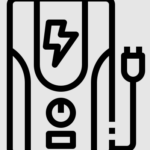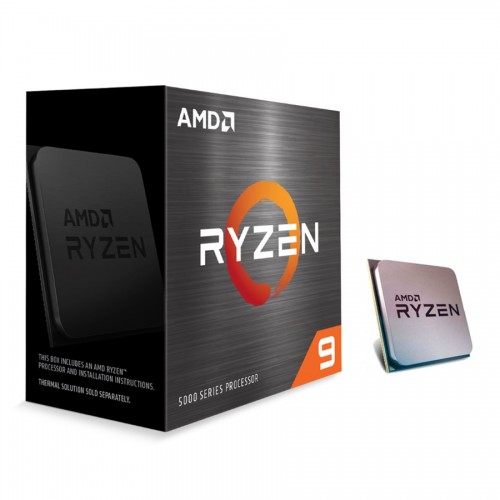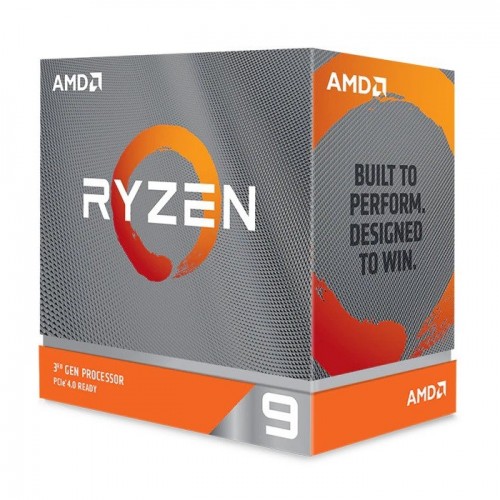Specification
| Basic Information | ||
| Base Frequency | 3.8GHz | |
| Maximum Turbo Frequency | 4.7GHz | |
| Cache | Total L2 Cache: 6MB Total L3 Cache: 64MB |
|
| Cores | 12 | |
| Threads | 24 | |
| Default TDP | 105W | |
| Supported Technologies | AMD StoreMI Technology AMD Ryzen Master Utility |
|
| Memory Specifications | ||
| Maximum Speed | 3200MHz | |
| Type | DDR4 | |
| Max Number of Channels | 2 | |
| Warranty Information | ||
| Manufacturing Warranty | 03 years warranty (No Warranty for Fan or Cooler) | |
Description
AMD Ryzen 9 3900XT Processor
The s cores are built on the same 7 nm silicon fabrication process as the Ryzen 3000 “Zen 2” processor, but with several refinements to the microarchitecture. The biggest change with “Zen 3” has to be the company doing away with the 4-core CCX and unifying all cores of the CPU chiplet into a single 8-core CCX. Even within the CPU core, AMD has worked to reduce latencies, improved branch-prediction, optimized the execution engine, fattened the front-end and load/store units, and deployed faster caches, which has a direct impact on IPC, or single-thread performance. IPC is the single biggest contributor to gaming performance, and the 19% claimed IPC gain over “Zen 2” should mean AMD has taken the gaming crown since the “Zen 2” architecture wasn’t too far behind “Comet Lake” at gaming to begin with.
Making of the AMD Ryzen 9 3900XT Processor
Unlike the competition, AMD isn’t launching a new chipset with Zen 3. Existing motherboards based on AMD 500-series or 400-series chipsets will work with the new Ryzen 5000 Series processors after a BIOS update. AMD also ensured that the increased IPC on the same 7 nm process doesn’t translate into a higher power draw, with the Ryzen 9 5900XT shipping with the same 105 W TDP as its predecessor, the 3900XT. In this review, we put AMD’s biggest claim for “Zen 3″—gaming performance leadership—to the test, along with our vast suite of CPU benchmarks to investigate whether AMD has wholly and comprehensively defeated Intel.
Performing Over the Limit and Exceeding Expectation
The new chip is almost as fast with AMD’s latest chip clocking in a cool 30 percent faster. It’s a similar story when you look at video encoding as well, with the X264 v5.0 benchmarking recording an impressive 75 frames per second against the 10900K’s 52. That’s a 45 percent lead for AMD’s latest chip. And this time we also see the 5900X outperform the 3950XT, not by much, but enough to make you realize how much of a heavyweight this chip is. As far as temperatures and power draw goes, there’s nothing alarming to report here. As already mentioned, AMD has stuck to the 142W socket power, and that’s what we saw under heavy lead. When idling, where cores are turned off and not a lot is really happening this drops to 25W, which is pretty impressive. The maximum temperature peaked at 81°C, which is comparable with the 3900XT. As far as the games are concerned, there are a few takeaways here. The first is that the overall performance has shot up in some titles—just look at the F1 2019 score for proof of that. Compared to the 3900XT you’re looking at a 20 percent increase in performance. Far more important than the improvements over the last generation though is the fact that there’s now effectively nothing between the 5900XT and Intel’s top Core i9 10900K.
Finally, Beating the Competition
The key factor in this is that AMD has wrestled the gaming performance crown off Intel. And even if it isn’t quite a knockout, more a win by points if we stick with that metaphor, it doesn’t diminish the fact that the last cry of Intel diehards has now vaporized. It doesn’t matter if you side with Intel or AMD when it comes to gaming, they’re both just as capable. And given the overall package from AMD, that makes this the better chip.












Reviews
Clear filtersThere are no reviews yet.